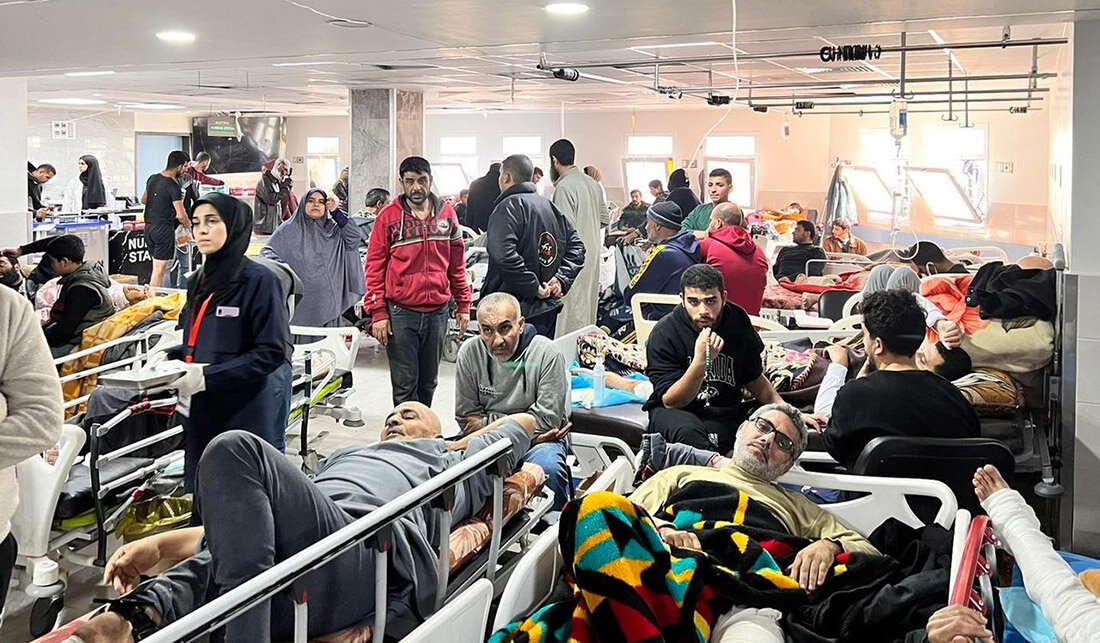Gaza: the ongoing humanitarian catastrophe

An entire population cut off from sustained aid. An estimated 40,600 deaths, and the numbers increase daily. Seventy-two per cent of all casualties women and children. Ten thousand people reported missing, most presumed dead under the rubble. Displacement on a colossal scale. Famine and food insecurity. Disease outbreaks. Systematic attacks on civilian spaces and health care. What is happening in Gaza defies belief. It is unconscionable.
On the frontline of the response to this tragedy are the courageous health and humanitarian workers who continue to serve their communities under unimaginable conditions and at great risk. Since 7 October 2023, 289 aid workers have been killed in Gaza – people whose only concern was to alleviate the suffering of Gaza’s civilian population. According to the Ministry of Health, 885 health workers have been killed and at least 310 arrested. The deaths represent 3.5% of the health workforce in Gaza prior to the war.
Around 1.9 million people – nine in 10 Gazans – have been displaced at least once. Many have been displaced multiple times. An estimated 43,580 are pregnant women. Each evacuation order upends lives, and in no place can survival or access to medical care be guaranteed.
The massively overcrowded shelters and camps pose a major risk of communicable disease outbreaks. Since 7 October 2023, 995 000 cases of acute respiratory infections have been recorded, as well as 577,000 cases of diarrhoea, 103,385 cases of scabies and lice, 77 958 cases of skin rashes, 10 038 cases of impetigo, 11 214 cases of chickenpox and 107,000 cases of acute jaundice syndrome (suspected Hepatitis A). There have also been suspected cases of meningitis and mumps. And to cap it all, in August a 10-month-old baby in Gaza was partly paralysed from polio, the first confirmed case in the occupied Palestinian territory in 25 years.
In response, by 12 September 560,000 children under ten years old had been vaccinated against polio thanks to the collective efforts of United Nations agencies, partners and the Ministry of Health during the first round of an emergency vaccination campaign that began on 1 September. Pauses in the conflict are needed to complete the second round.
Thirty-four people have died of malnutrition and dehydration, according to the Ministry of Health, and the forced closure of three centres for the management of severe acute malnutrition places the lives of many more children at risk.
Gaza’s health care system, which once provided impressive levels of care, has been devastated. Only 17 of Gaza’s 36 hospitals remain functional, operating at partial capacity. Across the Strip there are just 1490 hospital beds, including inpatient, maternity and ICU beds, to cover the needs of more than two million people. The capacity of the health system is being massively degraded as health needs soar.
According to the most recent analysis of the types of injuries resulting from the conflict, as of 23 July at least one quarter – 22,500 – injuries were life-changing and will require rehabilitation services for years to come. They include an estimated 13,455 to 17,550 severe limb injuries, between 3,105 and 4,050 amputations, and spinal cord, traumatic brain and major burn injuries. Those affected include thousands of women and children.
Gaza's only limb reconstruction centre became nonfunctional in December 2023 and was further damaged in February 2024. Much of the rehabilitation workforce has been displaced, and 39 physiotherapists have been killed. Inpatient rehabilitation and prosthetic services are unavailable, and supplies of assistive products, including wheelchairs and crutches, are exhausted. Aid restrictions make it almost impossible to replenish supplies.
This litany of horrifying statistics, which grow worse by the hour, reminds us of the true cost of war, counted in so-called indirect deaths and the erasure of a generation’s hopes and dreams. The fabric of life in Gaza has unraveled before our eyes. The destruction of critical infrastructure, including water and sanitation systems, endangers an entire population. Residential areas lie in ruins, with nearly two-thirds of homes in the Strip damaged or destroyed.
The unprecedented environmental impacts of the war in Gaza include “rapidly growing soil, water and air pollution and risks of irreversible damage to natural ecosystems,” according to a preliminary assessment published by the UN Environment Programme. Conflict-generated debris, covering vast swathes of Gaza, poses significant “risks to human health and the environment, from dust and contamination with unexploded ordnance, asbestos, industrial and medical waste, and other hazardous substances.”
Humanitarian agencies face multiple constraints in meeting the needs of the people of Gaza. In August, the number of humanitarian missions denied access by Israeli authorities almost doubled. Inevitably, our collective efforts fall well short of what is needed given the limitations imposed on the ground.
WHO is working flexibly with our partners to expand and reactivate services wherever possible, to track and control infectious diseases and to advocate for the people of Gaza. Our coordination of emergency medical teams and health cluster partners is proving vital. And we are fully committed to staying the course and supporting the longer-term rehabilitation of the health system in Gaza. Yet until today, WHO has received just US$ 102.12 million of the US$ 332 million needed to cover the two phases of the operational plan supporting the response to humanitarian needs on the ground.
Ultimately, the situation in Gaza is a political crisis requiring a political solution. We continue to call for the protection of health care, an immediate cessation of hostilities and a just and lasting peace.
Humanitarian aid must be allowed to reach those in need without hindrance. The people of Gaza cannot wait any longer. Every day that passes without a peaceful resolution is a day of untold suffering for innocent civilians. The time for action is now. Gaza cannot wait.
